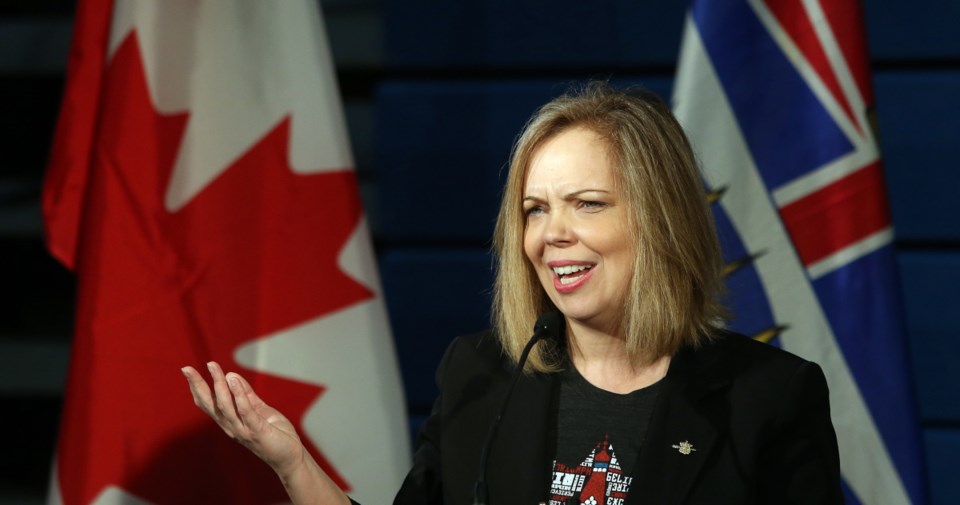The B.C. government will do a study on amalgamating capital region municipalities after seven of 13 voted in non-binding referendums to explore the idea.
“We will be doing a governance study,” Coralee Oakes, minister of community, sport and cultural development, told reporters Monday. “It’s going to be hard work. It’s going to be complex. It’s going to be very, very difficult, but we’re committed to doing that.”
Staff and resources will be provided to communities interested in looking at amalgamation, she said.
“It’s going to be complex, but it’s worth doing,” Oakes said.
“We should be looking at: Are we being efficient with our taxpayer money?”
In Saturday’s civic elections, voters in Victoria, Saanich, Esquimalt, Langford, Central Saanich, Sidney and North Saanich, representing a majority of the region’s population, cast ballots in favour of investigating some type of amalgamation — from sharing of more services to outright folding into a larger city.
The yes vote was weakest in Langford, where it won by 13 votes. Oak Bay was the only municipality, of those that asked, to reject the idea.
Each municipality posed the question differently. Oak Bay and Langford both asked voters if they are in favour of amalgamating. In the other municipalities, the question was about whether amalgamation should be studied.
Colwood, Sooke, Metchosin, View Royal and Highlands, with a combined population of about 46,000, did not place the issue on their ballots.
Amalgamation Yes, a group that fought for an amalgamation question to be on ballots, is thrilled with the results. “The electorate has spoken and now is the time for action,” said John Vickers, the group’s spokesman. “Unbiased, objective studies conducted by the province will provide the best quality information to residents.”
Since the first amalgamation in B.C. in 1926 between Point Grey and West Vancouver, there have been more than 20, Vickers said.
He said after the study is done, consultations take place and the best models chosen, Amalgamation Yes wants to see the province hold a binding referendum prior to the next municipal elections in 2018 or, at the latest, as part of those elections.
After new councils are sworn in and review the results of their amalgamation referendums, Oakes said work will begin with local governments on the next steps in devising what new models would look like.
Unanswered questions about the process include the amount of funding available, the deadline, the options that could be explored, and whether the study will end with a binding referendum either before or during the 2018 municipal elections.
The most common proposal for amalgamation in the capital region, one suggested by the Urban Development Institute in the 1990s, is: One municipality for the core communities, one for the Saanich Peninsula and a third for the West Shore.
“These would then mirror closely the three federal ridings and the three school districts,” Victoria Coun. Chris Coleman said Monday. If southern Vancouver Island were just discovered with a population of about 360,000 “no one would say let’s divide it into 13 different governments,” Coleman said.



